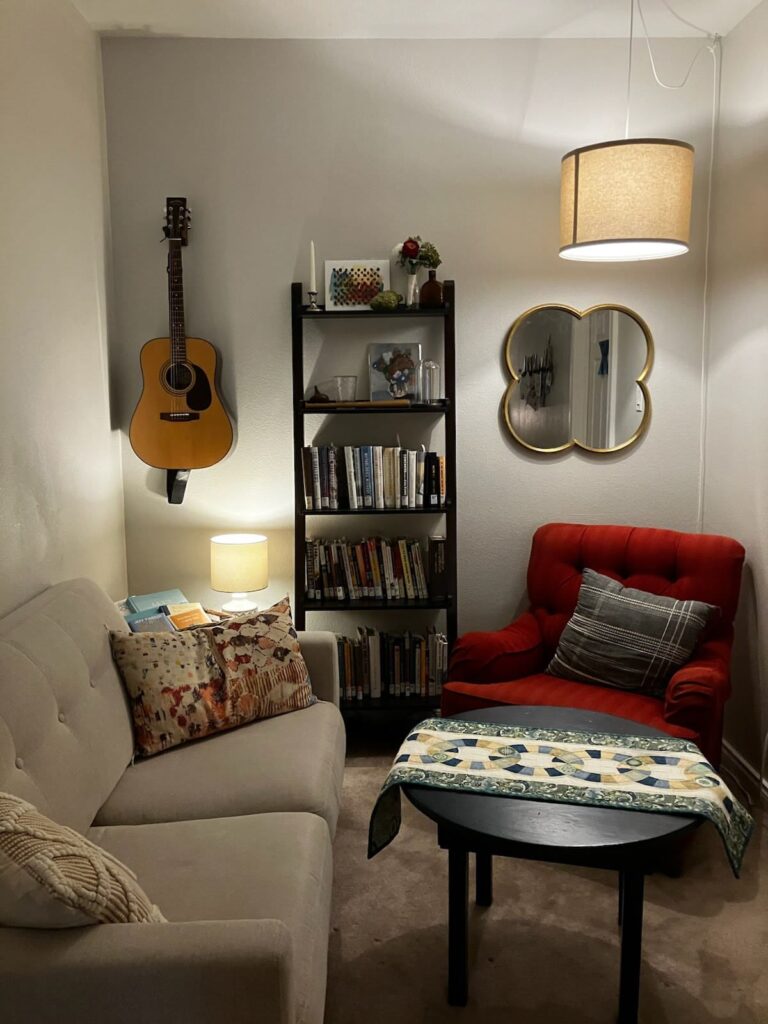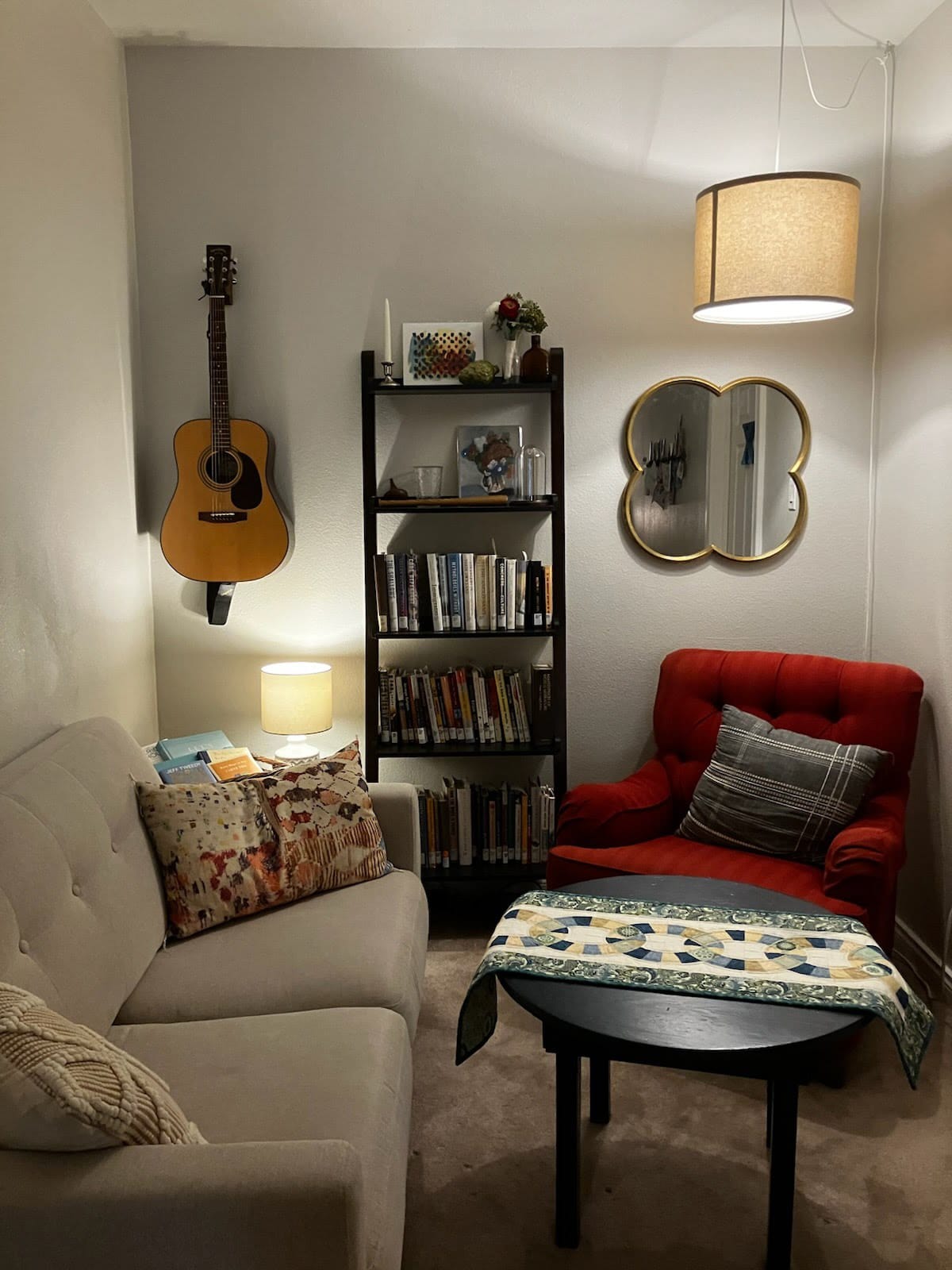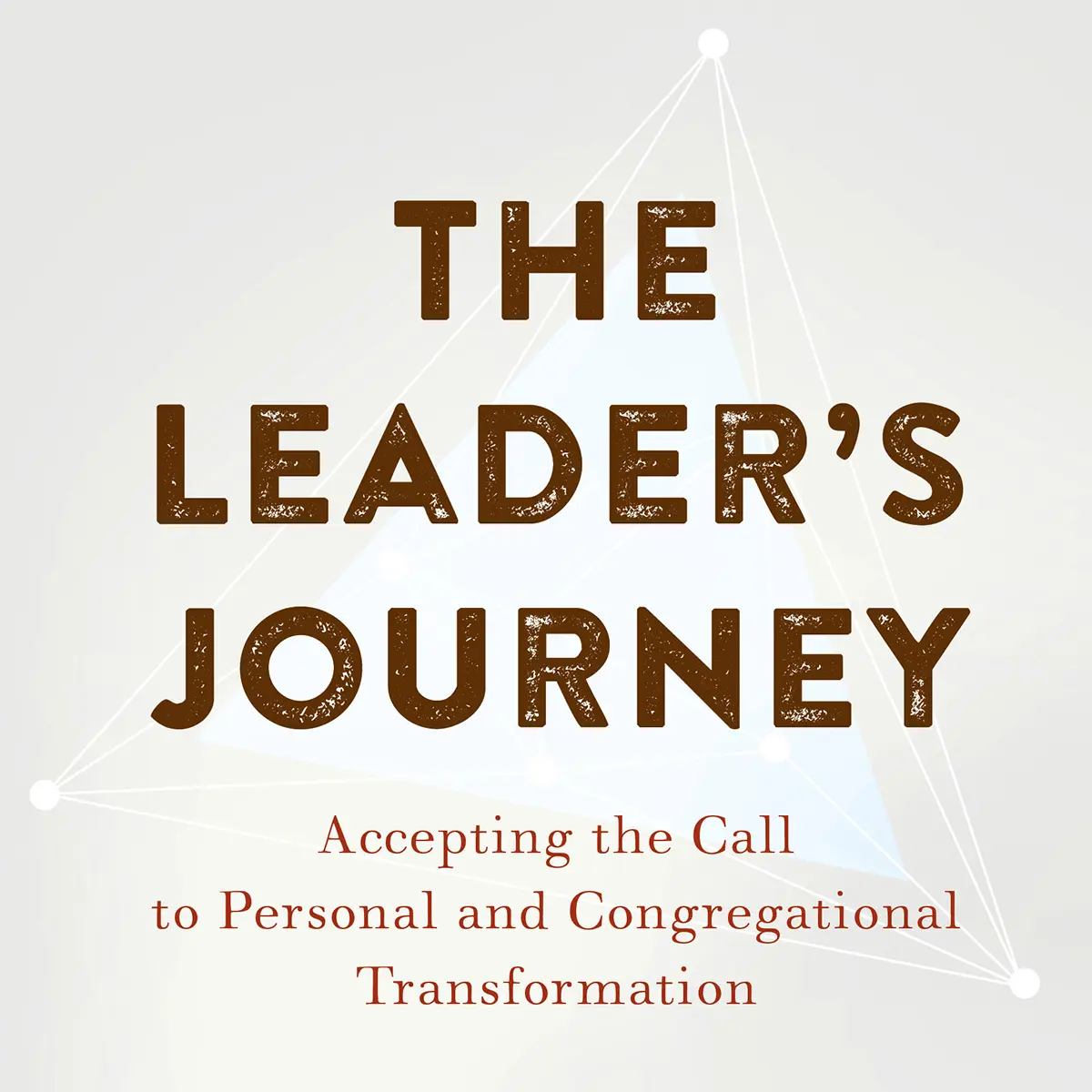Abridged for The Leader’s Journey blog. The original post can be found at this link.
On Monday, Joel took the day off from work and we rearranged some furniture. We moved his grandfather’s large wooden desk from the hallway into our bedroom, to create a more private space for me to conduct coaching calls with my clients. The night before we made the changes, I started feeling a little anxious. I knew it was going to be a lot of work to move everything around, and I wasn’t convinced I would like the new arrangement. Wouldn’t it be a bummer to go through all that trouble, only to realize that nothing had improved? I was aware of my unease, but reasoned that while the new setup might not work, I knew with certainty that the current setup wasn’t working. So we moved forward with it the next day, and in a relatively short time, everything was in place.
My first response was a sort of sick feeling in my stomach. I didn’t love it. Even though the previous arrangement hadn’t been super functional, it was aesthetically pleasing, and I was accustomed to the lovely view coming down the hallway. In comparison, the new arrangement seemed clunky and unartful. I voiced my concern, and suggested that maybe we should switch the couch and the chair. We did, and it still wasn’t quite right. We added a bookshelf, hung a mirror, and made a few other small changes.
The final effect was, honestly, breathtaking. Suddenly, as if by magic, what had been a hallway had been transformed into a living room. I mean that literally – it felt like the room had come alive, like it had a beating heart. It was emanating a warmth and glow that beckoned me closer. It didn’t just look lovely; it was immediately clear that something new had been created, and that this new thing would change the rhythms of my daily life.
–
The whole time we were rearranging the furniture, I had this strange feeling in the back of my mind that I was acting out in the real world something that has been going on inside of me for a few months now. For the last year or so, I’ve had the increasing sense that I am ready to take the next step in my personal development. I did a lot of work about a decade ago, and experienced some immense gains as a result, but for the past several years I’ve sort of been coasting. There are some key relationships in my life that I have been saying for years I want to work on, but have continued to be impossibly stuck. And then I started to notice this weird “freeze” response in my body that shows up in high-conflict situations. Or really any level of conflict. Or even the possibility of conflict…
My daughter Kalia suggested to me that I was exhibiting symptoms of trauma, an idea that I immediately dismissed because it doesn’t fit with any of my origin story narratives. But we kept the conversation going, and she persisted in her assessment, and I told her I would consider it. In the beginning I was mostly just humoring her, but I eventually came to the realization that whatever word I wanted to put on the origin of my physiological symptoms (whether trauma, or childhood wounds, or formative experiences), the symptoms themselves were getting harder to ignore. So, at Kalia’s encouragement, I decided to look for a therapist and figure out what was going on with my nervous system.
–
I feel the need to say here that none of the symptoms I’m referring to are, objectively, a “big deal.” They are all things that happen inside of me and are all but invisible to the watching world. A tightening of my chest, a knot in my stomach, an almost imperceptible trembling. They represent a hyperactive nervous system, as if my body is in constant fear of death-level threats in situations where I am, objectively, completely safe. While this is irrational, it is not inexplicable. We now know, after decades of study in the field of trauma, that the wiring of our nervous system begins in utero, and continues through our infancy and childhood. Unless we have done serious work to rewire our nervous system, all of the physiological responses we experience as adults are simply replays of experiences in our early years. So while they might not “make sense” now in our current context, they did make sense back then. Our minds may have learned new ways of thinking about the world, but our bodies are still stuck in the past, remembering events our mind has long forgotten.
So what is my body remembering? Why is it so afraid all the time? And why have I never thought to ask that question before?
–
Although I am fascinated by the “why” questions, I am learning that, in the case of rewiring my nervous system, it may not be that important to understand or remember the events that originally programmed me. What matters more is learning to recognize what’s happening in my body in the present moment, and to learn to “be with” those sensations and emotions instead of shutting them down. Sometimes this looks like letting my body tremble when I feel afraid, or letting myself cry when I’m sad, or feeling the energy of my anger and listening to the messages it’s trying to convey.
This work is, undoubtedly, exhausting. Questioning my own deeply-held narratives, and letting myself feel heavy emotions that have been accumulating for several decades doesn’t leave much energy for other endeavors. But for the first time in my life, I’m able to imagine the possibility of a life on the other side of 24/7 bodily stress. A life where I’m comfortable in my body, where I express my emotions freely, and where the majority of my energy isn’t going toward repression. What might I do with all that extra energy? The possibilities are endless.
Still, choosing to push against the status quo – to rearrange the furniture of our lives, if you will – is costly. Why give up the comfort of familiarity for the uncertainty of the unknown? I think for many of us, we don’t really believe there’s an alternative to our current misery. That chair has to go there! That couch must go here! There’s no other way to arrange the furniture!
But what if…there is? Couldn’t we just try it?
Reflection Questions:
- Do you ever have strong physiological responses to situations that are not life-or-death? When does this tend to happen? And how have you explained this to yourself?
- What about your status quo isn’t quite working for you anymore?
- What would it take for you to try something different?









